An Ode to David Lynch
how twin peaks helped me embrace my own love for horror, surrealism, the grotesque, beauty, and the absurd.
Like many a teenage girl in the 2010s, I spent a good amount of time scrolling my Tumblr feed. It is where I learned about bell hooks and intersectional feminism, overshared about my teenage loneliness and angst, began expanding my interests in politics, aesthetics, alternative music, and where I discovered David Lynch’s seminal Twin Peaks. It started with aesthetic screen grabs and gifs: The Red Room with the black and white zig-zag floor, the wood paneling and stunning nature scenes, the beautiful actresses playing high school girls. I watched gifs of Audrey slowly dancing on the floor of the checkered diner, her lips painted bright red. “God, I love this music,” she says with a seductive smile , a lovely profile of her sitting at the counter, the perfect beauty mark near her eye. She turns to Donna, “Isn’t it dreamy?”
I began watching Twin Peaks because, in all honesty, I wanted to be like Audrey Horne. I felt like I related to her, or more accurately, I wanted other people to see me as they saw her. She was beautiful, charming, and powerful because of her family, yet vulnerable at the same time; alluring and innocent all at once. She lusts after Agent Cooper, an FBI Agent sent to solve the murder of her classmate Laura Palmer, and despite her age tries desperately to seduce him. He wants her but denies her advances. Despite his attraction to her, she’s too young he says, but can’t they be friends? My teenage self desperately wanted to be that type of girl, and so, I began watching the show having no fucking clue what I was actually getting into.
I’d always cared about art and aesthetics, but this period was especially formative in developing that sensibility. I began to explore a whole new dimension of film, television, music, and art. Like many, my teenage years were a time of discovery with the certainty I was the first person to ever find these hidden worlds, despite these worlds having been explored by many before. . To me, it was new, and because I was a teenager, I felt like my discovery was the most unique and special thing in the world. I found Twin Peaks in the midst of this.
I came to the show for Audrey, but I stayed for the weirdness of it all. David Lynch was one of the first artists that made me fully realize my appreciation for the unnerving and odd combined with beauty. I had begun to explore this when I first took art history early in high school, loving the depictions of the Last Judgement and hell in Christian art, and even before that when I learned about the Sisterhood of Perpetual indulgence and their style of drag back in middle school. Yet Twin Peaks stood alone, introducing me to a whole new world of violence, oddity, beauty, and surrealism. It embraced its over-the-top acting, as its complicated plots that were often hard to follow if not entirely inscrutable. I had come into the show not knowing at all what to expect, only hoping for a love affair between Audrey and Dale Cooper.
I remember the first time I saw the scene of Sarah Palmer, played by the brilliant Grace Zabriskie (I knew her before this from Big Love where she plays another unhinged mother, equally as well acted as her depiction of Sarah), sitting on Laura’s bed in the midst of a mental breakdown over the murder of her daughter. She imagines she sees her dead child, Laura replacing Donna in the scene. As Sarah hugs Donna/Laura, she sees a man crouched at the foot of the bed, looking up at her, and she screams. I had not seen anything about this aspect of the show and had come into it knowing very little, this was the first episode and I had no clue what was happening. What I did know was that I was fucking terrified. It was not just the visual, which I still find brilliant in how scary it is while being so mundane, but the fact that it is unclear what is real and what is a dream. No media had scared me like that before ever. I had to close my laptop and stop watching for a week.
I’d always been certain I hated horror. I was an anxious kid, and to me, horror was relegated to jump-scares and big movie franchises. Twin Peaks was the first time I realized that horror could be stunningly beautiful and still terrifying. In Lynch’s world, horror was not jump scares and haunted dolls, horror could be trauma personified, it could be surreal and psychological, it could be a grown man just crouching by the foot of your bed, unsure if he is real, imaginary, or somehow both.
I ended up exploring Lynch’s more avant-garde work in my high school museum studies class a few years later. It was a Friday afternoon in the art history classroom when my teacher began playing Lynch’s 2002 film Rabbits on the big projector. The 50 minute video is odd and unnerving, and while I don’t remember what led us to watch it or if we even discussed it as a class afterwards, I vividly remember the art. Rabbits was not the only disconcerting artwork I experienced in that class that shaped me. I felt a similar way when that same teacher showed us clips of Paul McCarthy’s film “Painter”, a work that undermines the idea of artistic greatness through grotesque imagery. In the film, McCarthy, wearing a huge prosthetic nose and hands, wanders around a room trying (and often failing) to paint. I turned to my friend as we watched and whispered “I feel like I’m watching something illegal on public access television, like a smut film that I can't not look at.” In watching both Rabbits and Painter, I felt like I was seeing an artwork that felt like a secret or like it belonged on a tape that was discovered in a murderer’s basement, and yet I loved it for reasons I could not describe.
It’s one of a handful of artworks I still think about, a decade later, and try to understand what exactly unnerves and fascinates me. I went on to write my thesis in college about one of the other artists I learned about in that class that solicited a similar reaction, Gillian Wearing, and I continue to think about David Lynch andPaul McCarthy on a regular basis to this day. I have purchased books, researched, jotted down notes, made connections, rewatched the videos, and stared at photographs after taking edibles on countless occasions since then. I have gone on rants and tirades about their genius, on the visceral feeling I get when I experience their art, how excited it makes me, how I find it so odd and yet absolutely love it. I still cannot fully explain what it is about the works that draw me in and make me feel so much, all I know is that they have undoubtedly left an impression.
Thinking about Lynch’s body of work led me to think about another artist I have spent years of my life obsessing over– Cindy Sherman. There’s a particular a still from Lynch’s final feature film, Inland Empire, that reminds me so much of Sherman’s portraiture, but the more I reflected on his works, the more I noticed more general similarities. The duality of what they created; how beautiful one image can be, how horrifying the next one is. Both force you to question what is real and what is not (albeit in different ways), and both were inspired by the familiar and the bizarre.
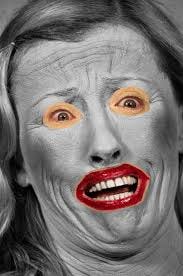
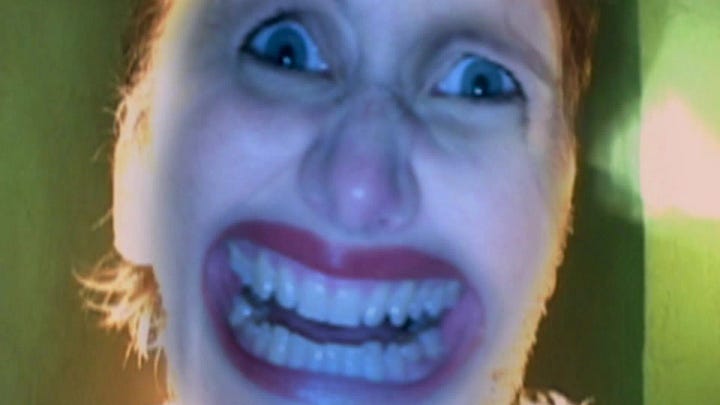
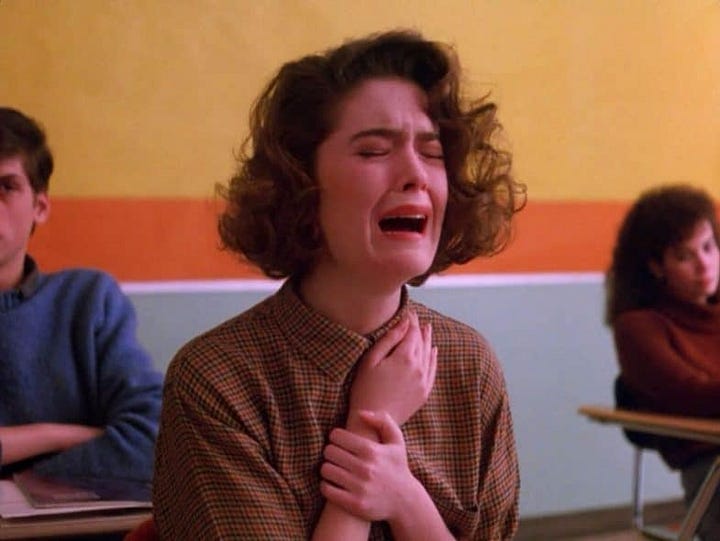
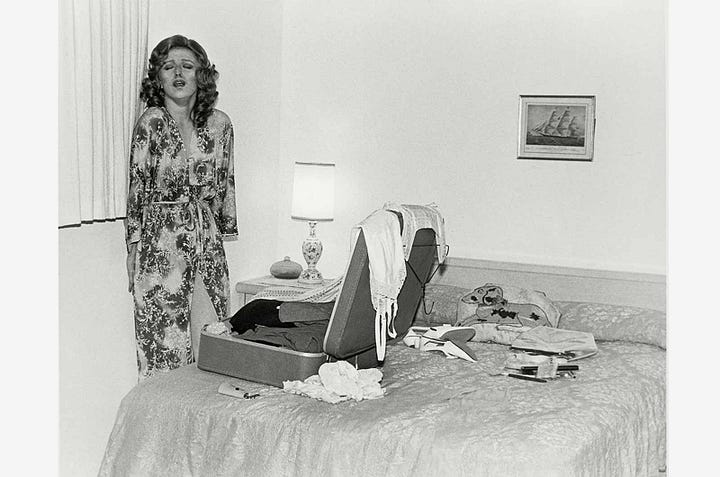
As I studied art and began to think more deeply about my own preferences and what works I am drawn to, I’ve continued to discover my appreciation for an artist that explores the grotesque, the artificial versus the real, the glamorous, the beautiful. To me, Lynch’s work so often encompasses this idea in all its elements. I still find myself struck by the beauty and oddness of images from his work, they still make me giddy to look at in a way that seems silly. I’ll see the still of the Pale Horse from Twin Peaks, so eerie and out of place, or the shot of red roses against a white picket fence and a bright blue sky from Blue Velvet, and I will feel an overwhelming sense of excitement about art and all that it can be.
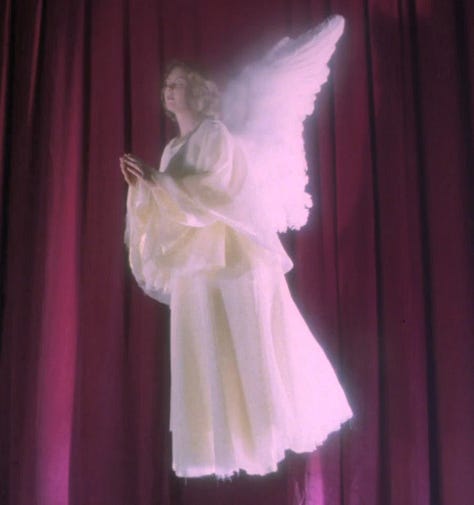
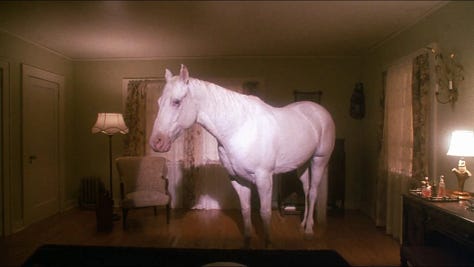
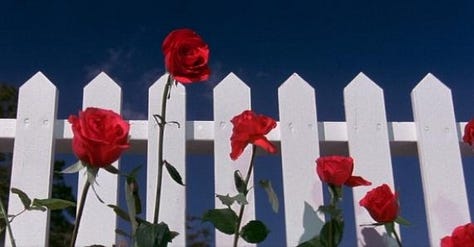
Lynch once said, “My movies are film-paintings – moving portraits captured on celluloid. I’ll layer that with sound to create a unique mood – like if the Mona Lisa opened her mouth, and there would be a wind, and she’d turn back and smile. It would be strange and beautiful.” This is exactly what he achieved; strange and beautiful paintings that moved. He was an artist in every sense of the word, and listening to him talk about art, talk about anything for that matter, was a joy. After learning of his death, I scrolled through meme after meme, screen grab after screen grab of things he had said that were funny and beautiful, insightful and irrelevant. All brought a smile to my face.




